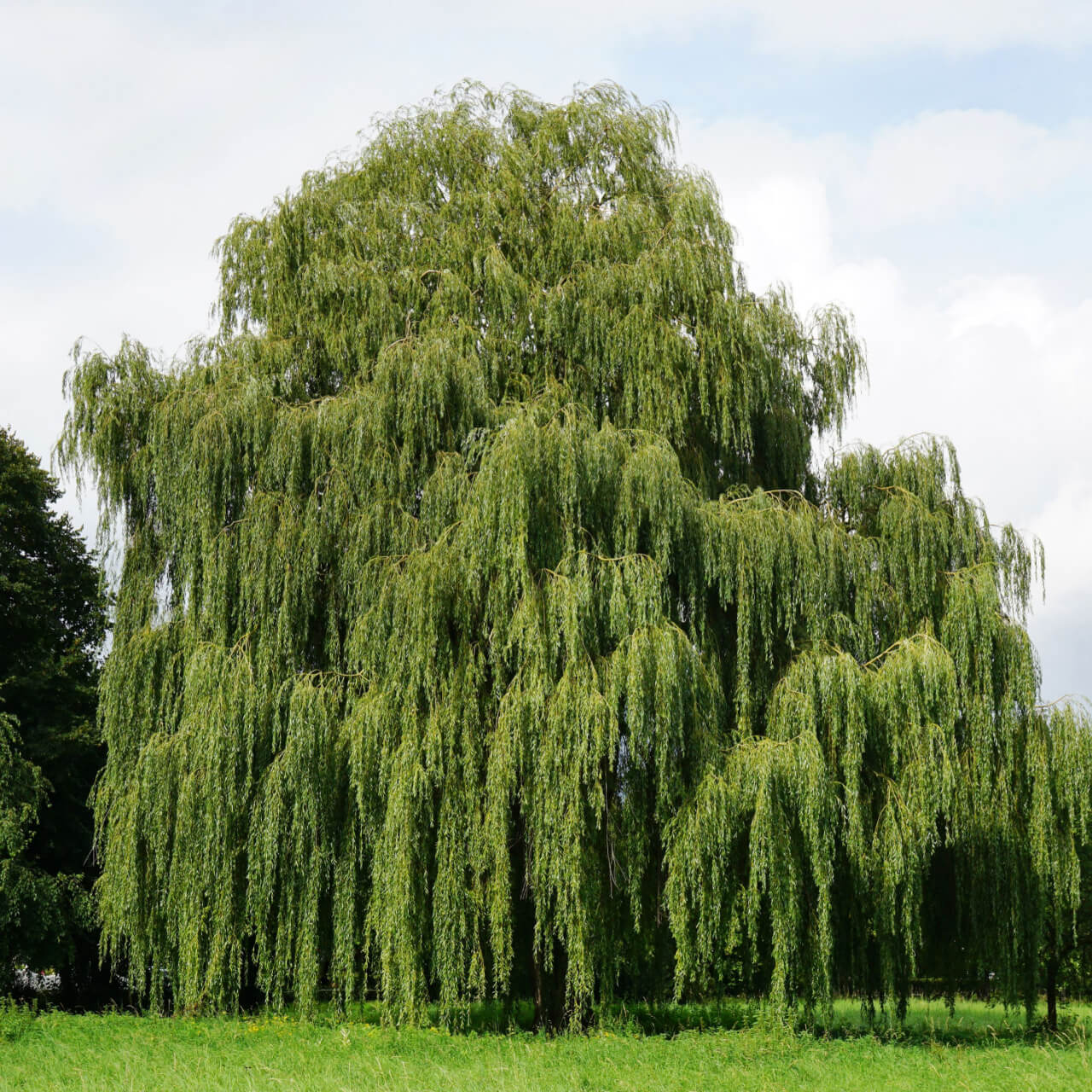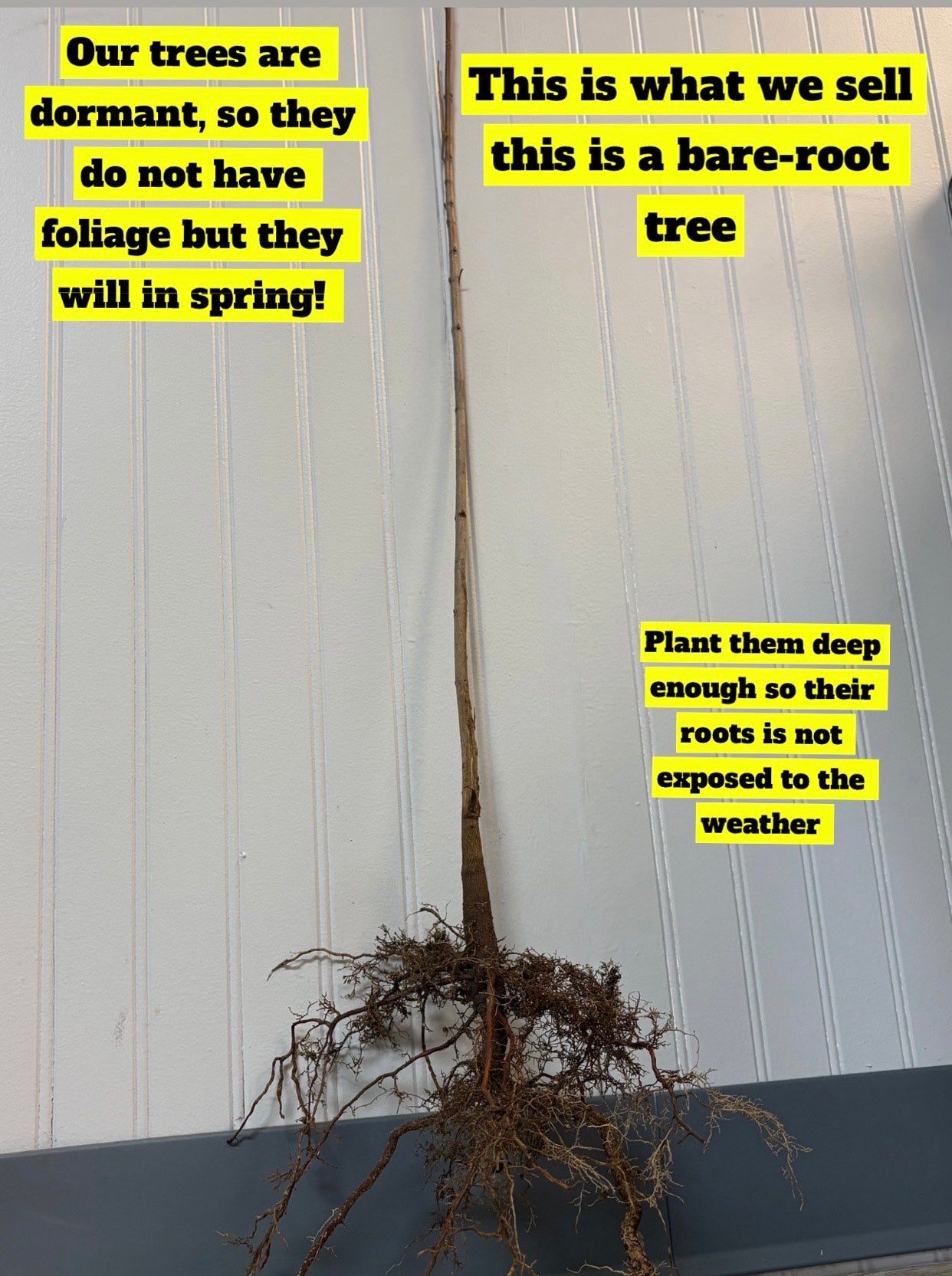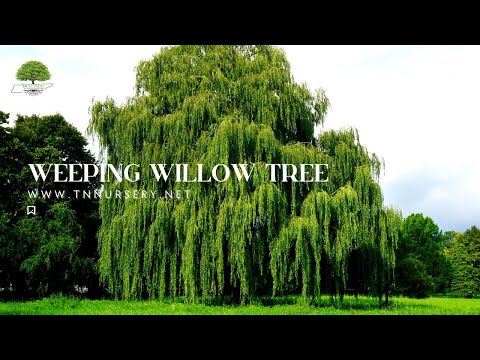Weeping Willow Trees For Sale
The Weeping Willow tree is a whimsical giant recognized by its crown of sweeping and low-hanging branches. Its long and slender leaves are an early indicator of spring, with its yellow twigs and green leaves. It is one of the first trees to sprout new leaves in the spring and the first to lose leaves in the fall. This species of willow is native to the northern area of China, but is now a well-known tree found throughout North America.
The willow tree is an easy-to-grow tree that takes root easily, grows up to eight feet per year, and easily reaches up to forty feet in height and thirty-five feet in width under the right conditions. There is a vast variety of willow trees, with over 400 species. In the spring, weeping willows produce what are referred to as catkins. These are silver-tinted green foliage that contains flowers. In the fall, the weeping willows' lance-shaped leaves turn golden.
Hardy Plant Zone
Although the tree is expected to grow well in hardiness zones 6-8, it is well known to grow in zones 4-9.
Mature Height
Under good conditions, the tree can reach 30–40 feet in height and spread about 35 feet.
Soil Requirements
It is a highly adaptable tree. It likes rich and moist soil, but it is versatile and can tolerate alkaline, acidic, sandy loam, and well-drained soils. Although it is drought-tolerant, it prefers growing next to water sources such as creeks, rivers, and ponds.
Growing Speed of the Weeping Willow Tree
It is one of the fastest-growing shade trees. Under normal circumstances, it can grow approximately two feet per year, but it has been known to grow up to eight feet in a year. Its growth rate begins slowly but speeds up once it reaches a height of about ten feet.
Characteristics and Appearance
This fast-growing tree has a personality all of its own. Its rounded crown, weeping, and flowing branches make it a majestic presence in the yard. Some branches can grow so long that they can touch the ground. The leaves are lance-shaped and turn to a yellow hue in the spring. The trunk has rough and gray bark marked by branching ridges, resulting in deep furrows. These trees are highly adaptable and easy to grow. Since they were first discovered, this tree has been a favorite among tree lovers.
Uses in Landscaping
Weeping Willow Tree is the perfect shade tree for any yard. Its great height, long flowing branches, and dense foliage provide an excellent shade for sitting beneath during the hot summer. It can easily grow anywhere in the yard, but it loves water.
Placing one next to a river, creek, or pond may enhance its growth rate and the yard's magical feel. Planting them in areas of the yard where you have water issues, such as low spots that tend to puddle, is a perfect solution to the problem at hand. They can be grown individually or in groves for a dramatic effect.
The weeping willow is one of the most recognizable trees. With its sweeping branches and weeping canopy, it is a favorite among people who desire a majestic and whimsical feel to their property or a focal point of beauty. It is one of the fastest-growing shade trees and is a favorite among children for climbing and hiding within its dense canopy and dropping branches.
Exposure
Weeping Willow trees thrive in complete sun to little shade, needing at least 4-6 hours of natural sunlight daily. They grow best in bright, open areas but can handle some light shade, particularly in hotter climates.
Height at Maturity
Over 25 Feet
Usage
Fast Growing
Shipped As
Bare-root
Ships
UPS
Planting Zones
4-9




